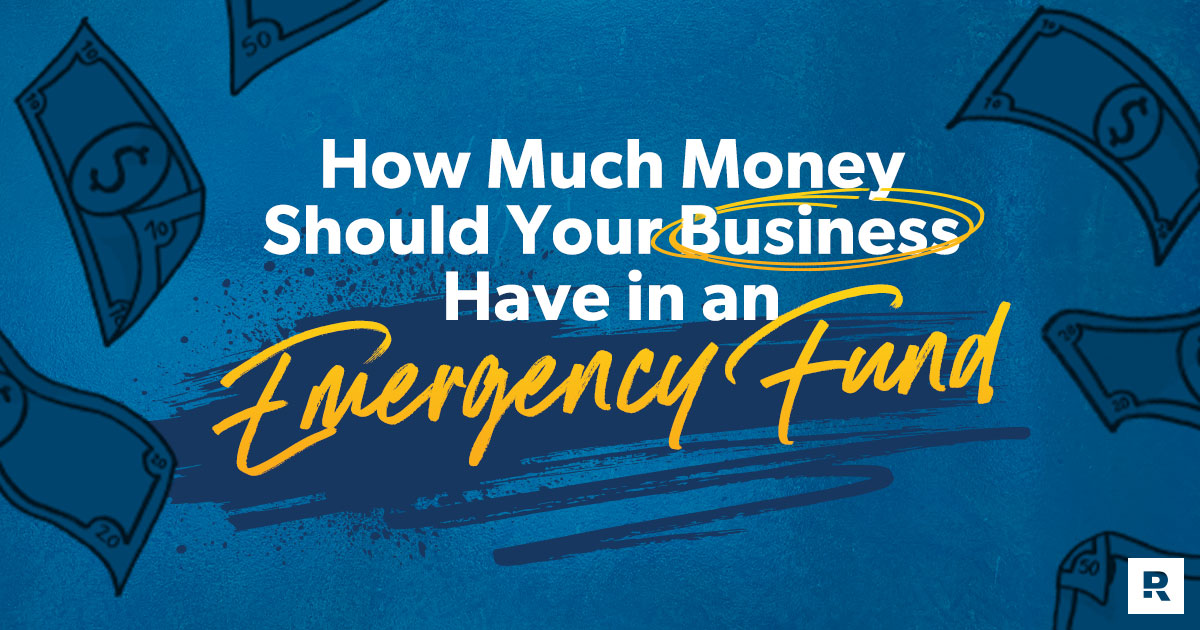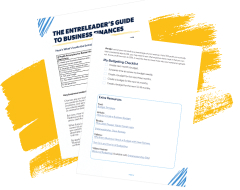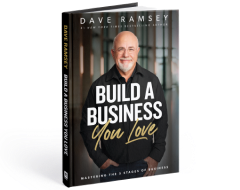How Much Money Should You Have in a Business Emergency Fund?
7 Min Read | Apr 15, 2025

Ever seen the one-liner “Money talks . . . but all mine says is goodbye”? It’s easy to laugh at a statement like this when it doesn’t hit close to home. But when cash-flow problems and money emergencies become the story of your business, they’re anything but funny.
No matter who you are, life will throw your business some curveballs. That’s a promise. A bad economy, busted equipment or, heck, maybe even a global health crisis will disturb your financial forecast at some point. But being hit with the unexpected doesn’t have to destroy your business. You can weather intense storms if you have a business emergency fund.
Proverbs 21:20 (NIV) says, “The wise store up choice food and olive oil.” In other words, wise people save money. So whether your business is big or small, just getting off the ground or well-established, it’s up to you to wisely build a business emergency fund. We’ve laid out the basics here to help you get started.
What Is a Business Emergency Fund?
Why Do I Need an Emergency Fund for Business?
Should My Business Be Debt-Free Before I Start Saving?
How Much Should a Business Have in Savings?
When Can I Use the Money in My Business Emergency Fund?
What Is a Business Emergency Fund?
A business emergency fund is a stash of money you keep in a savings or checking account to use for unexpected financial challenges your company faces. It’s a good idea to save this cash in a high-interest account, like a money market account, separate from your operations bank account.
In the accounting world, a business emergency fund is part of your capital reserves, or retained earnings. Business leaders use retained earnings for three things: emergencies, investing in the business, and capitalizing on opportunities.
Why Do I Need an Emergency Fund for Business?
Emergencies are emergencies because they happen out of nowhere, right? Who knew your biggest customer would cancel their order—or on the flip side, that a customer would place a massive order you need to scramble to fill? The thing is, if you operate on a payroll-to-payroll or crisis-to-crisis basis, eventually emergencies like this will derail you. Not so when you have cash set aside. You’ll be ready to fill gaps, handle the unexpected, and keep moving forward!
When you have a business emergency fund, you’ll be ready for situations like these:
- Covering unexpected expenses
- Dealing with slow sales until business picks up
- Handling customer problems, like canceled orders
- Surviving disasters and disruptions
- Avoiding debt by being your own bank
Now, some business advisors will tell you to take out a line of credit or small-business loan or dig into your personal reserves to keep your business afloat when emergencies strike. But what happens if the creditor comes calling before you’re ready to pay them back? That leaves you vulnerable to more bad money decisions and deeper debt. Having a pile of savings allows you to stay out of debt and keep your head above water until the storm passes.
Don't Let Your Numbers Intimidate You
With the EntreLeader’s Guide to Business Finances, you can grow your profits without debt—even if numbers aren’t your thing.
Should My Business Be Debt-Free Before I Start Saving?
You may wonder if you need to pay off all your debt before you start tucking money away, especially if you’re familiar with Ramsey’s 7 Baby Steps. That’s a great question and a quick no. The Baby Steps are a plan for your personal finances. First you save $1,000 for a starter emergency fund. Then you pay off all your debt (except your house) with extra cash before finally saving toward a fully funded emergency fund.
You probably thought running a business sounded fun—until you realized it would actually run you. Discover the EntreLeadership System—the small-business road map that takes the guesswork out of growth.
But the process to financial freedom for business owners is different. Instead of working on one bucket at a time, EntreLeadership recommends splitting your business profits between these two buckets every month:
- Saving money for retained earnings
- Paying off debt
You get to choose how much goes into each bucket, but here’s what we recommend:
- If your business has debt, adjust your personal salary to a living wage. Pay yourself enough to live comfortably but modestly. (No matter how much you like rice and beans, you’re not going to want to eat them for every meal.)
- Then, split your profits and put a larger amount toward paying down debt and a smaller amount toward savings. For example, you might use 80% of your profits for debt and 20% for retained earnings.
Is pouring into different buckets at the same time hard? Absolutely. But with focused intensity, it’s 100% doable, and you’ll reap rewards that money can’t buy—like less stress and more time for the people and things you love. EntreLeader Boyd Smith summed up his experience following EntreLeadership’s money strategy for small businesses:
“This plan is not easy, but it’s excellent,” he shared. “Using it, my business became 100% debt-free, including our office building. The retained earnings helped us significantly grow our team, top and bottom line.”
Boyd admits growing at the speed of cash was hard on his ego. “Many of my business buddies have bigger, flashier businesses,” he said. “But they have investors, debt and a lot more stress.”
Plus, those buddies work longer hours and carry a lot more risk without taking home any more money than Boyd does. “Operating at the speed of cash is a great way to live.”
Your Road Map to Grow Your Business
Dave Ramsey’s new book Build a Business You Love is now available for purchase! This book will walk you through the same proven system Dave Ramsey used to build Ramsey Solutions from a card table in his living room to a $250 million company.
How Much Should a Business Have in Savings?
Brace for impact. This is a big number to swallow, but you can trust us when we say it’s worth it. Your retained earnings goal should be about six months of operating capital saved in cash. We’ll be the first to tell you it takes a while to get there, but just like the famous saying reminds us: You eat an elephant a bite at a time. Using these tips will help you grow your business emergency fund, no matter what size your business budget is:
1. Set up an automatic transfer.
Open an interest-bearing bank account just for retained earnings, and set up an automatic monthly deposit. You’ll be blown away when you see the month-over-month growth of your balance. Just remember that it’s an emergency fund, and resist the temptation to dip into it except for true emergencies. Hint: Those fancy new office chairs are not an emergency—unless your team members are sitting on the floor. Stay strong and save on!
2. Save even more when business is good.
If you’re a fan of Tom and Donna from Parks and Recreation, you know what it’s like to treat yo’ self. (It’s the best day of the year.) But you don’t have to be a fan to understand the lure of splurging when you have extra money. Our advice: Don’t. When sales are up, pour even more money into your reserves to meet your savings goal. You’ve got this! All the temptations that are calling your name will still be there when you’re truly ready to treat yo’ self.
3. No amount saved is too small.
Saving big chunks of money isn’t always realistic—especially if your business is small and you’re living on rice and beans to build it. But a penny saved is a penny more in your business emergency fund. And those pennies you sock away for the future will multiply over time. Slow and steady wins the race.
When Can I Use the Money in My Business Emergency Fund?
At the risk of sounding like a broken record: Your small-business emergency fund is for business emergencies only. It’s meant to help you weather financial storms.
Is your desire for the newest truck model or fanciest office furniture a financial storm? No.
Is busted equipment you need to bring in money a financial storm? Yes.
What about when you can’t meet payroll because you’re having trouble collecting from your customers? Yes, that’s a storm too.
Now, for a trick question: Is low cash flow during the off months of seasonal business a storm? It shouldn’t be—because you can plan for off-season dips in revenue. Like a squirrel gathers nuts for winter, sock away cash during your peak season to take care of your team in the lean months. And, yes, you’ll keep that extra money in your emergency fund.
Once you have a decent chunk of money saved and a regular savings rhythm, the fun begins! Besides avoiding money mistakes and fielding financial curveballs, you’ll be set to take advantage of sweet opportunities that come your way—without the burden of debt.
Next Step: Take the Guesswork Out of Your Business Finances
You don’t have to fake it until you make it with your business finances. Check out the EntreLeader’s Guide to Business Finances to learn principles and practices that will help you grow your profits without debt—even if numbers aren’t your thing.


